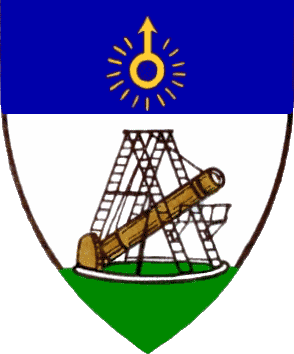Rue
Herschel (Paris VI)
|
Biography
Frederick William Herschel was born
Friedrich Wilhelm Herschel on November 15, 1738, in Hanover.
His mother was Anna Ilse Moritzen.
His father, Isaak Herschel, was a military musician
in the Hanoverian Guards.
William held a position in that same band until 1757.
He fled to England to escape the French occupation of Hanover.
In England, William Herschel earned a living as a musician:
First, he copied music, then he taught, performed and composed...
In 1766, he became the organist of "a fashionable chapel in Bath".
William Herschel was first introduced to telescope making by reading
A Compleat System of Opticks by Robert Smith
(Herschel had previously read about musical theory in Harmonics,
by the same author).
His brother Alexander and sister Caroline joined him at Bath, from Hanover.
On March 13, 1781, using a 6.2" (16 cm) telescope,
Herschel made the discovery observation of the
seventh planet, now named Uranus (the name was suggested
by Johann Elert Bode,
while Herschel himself referred to it as
Georgium Sidus, the star of George,
in honor of King George III).
Herschel received the Copley Medal in November of the same year and was subsequently
elected a Fellow of the Royal Society (FRS) in December 1781.
In 1788, Herschel married Mary Pitt
(widow of his friend and neighbor, John Pitt, who had died in 1786).
The Herschels settled in Slough, in a house which would later be known as
Observatory House.
There, on March 7, 1792
(when William Herschel was already 54) a son was born to the Herschels who would
earn top honors of his own, as a mathematician and an astronomer:
John Frederick William Herschel.
Although his name is not attached to a breakthrough discovery resembling
that of his father,
John
Herschel (1792-1871) was regarded by contemporaries as
the natural heir to Laplace, no less
(incidentally, Laplace was instrumental in confirming mathematically that
the 1781 discovery of Herschel senior was indeed a new planet).
In 1809, John Herschel entered St John's College (Cambridge).
In 1812, he was Senior Wrangler at Cambridge.
In 1813, he was elected a Fellow of the Royal Society (FRS).
He received the Copley Medal in 1821 and 1847
and the Royal Medal in 1833, 1836 and 1840.
He was also one of the founders of the
Royal Astronomical Society, in 1829.
In 1829, John Herschel married
Margaret Brodie Stewart, by whom he had a large family.
In 1831, he was made a Hanoverian knight by King William IV.
After the death of his mother in 1832,
Sir John Herschel moved with his family to the Southern Hemisphere
and undertook 4 years of astronomical observations (1834-1838)
from Claremont, near Cape Town, at the location currently occupied by the
Grove Primary School
(cf. Armoria Academica).
Upon his return from South Africa,
John Herschel was made a baronet (1838).


